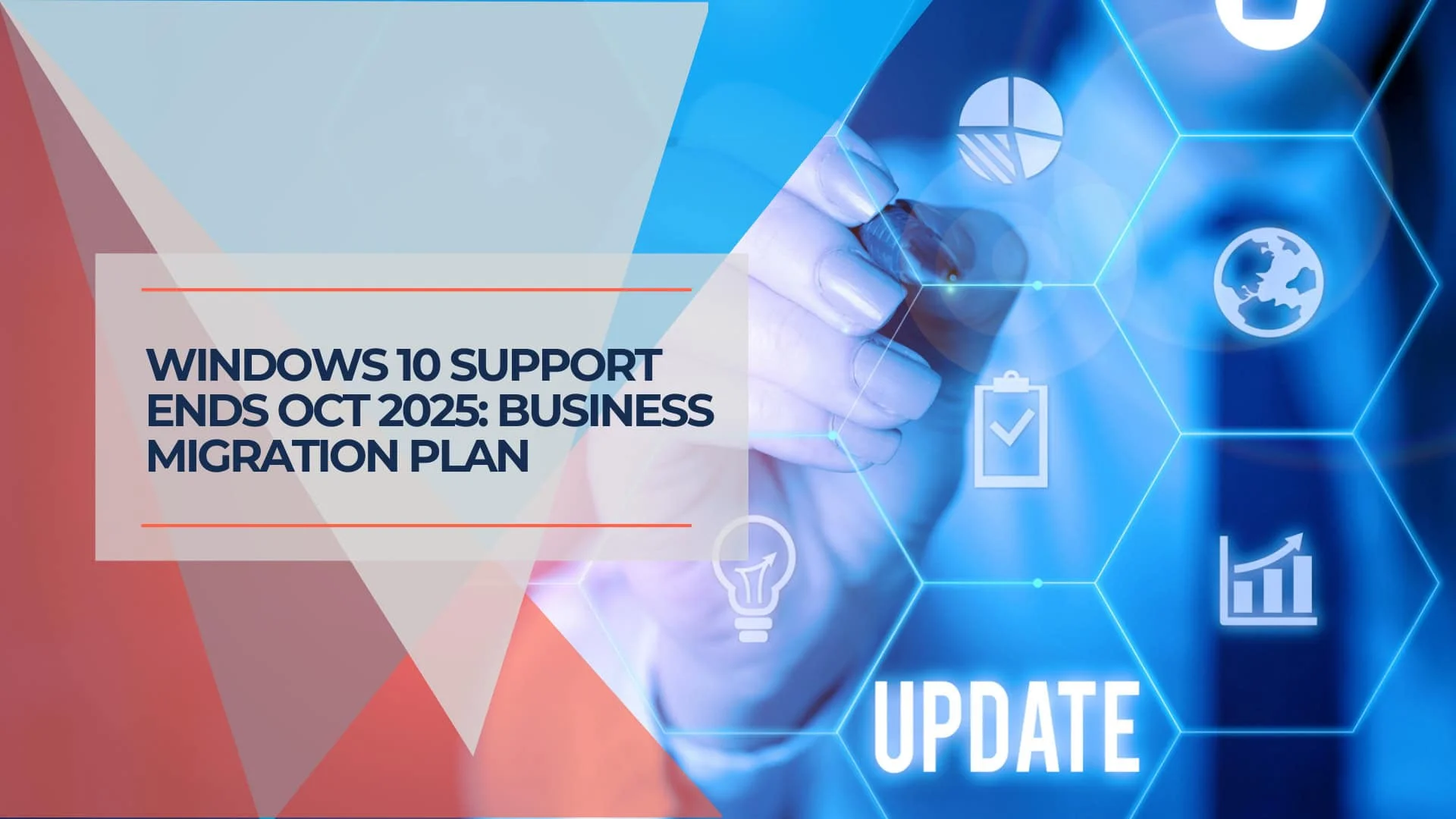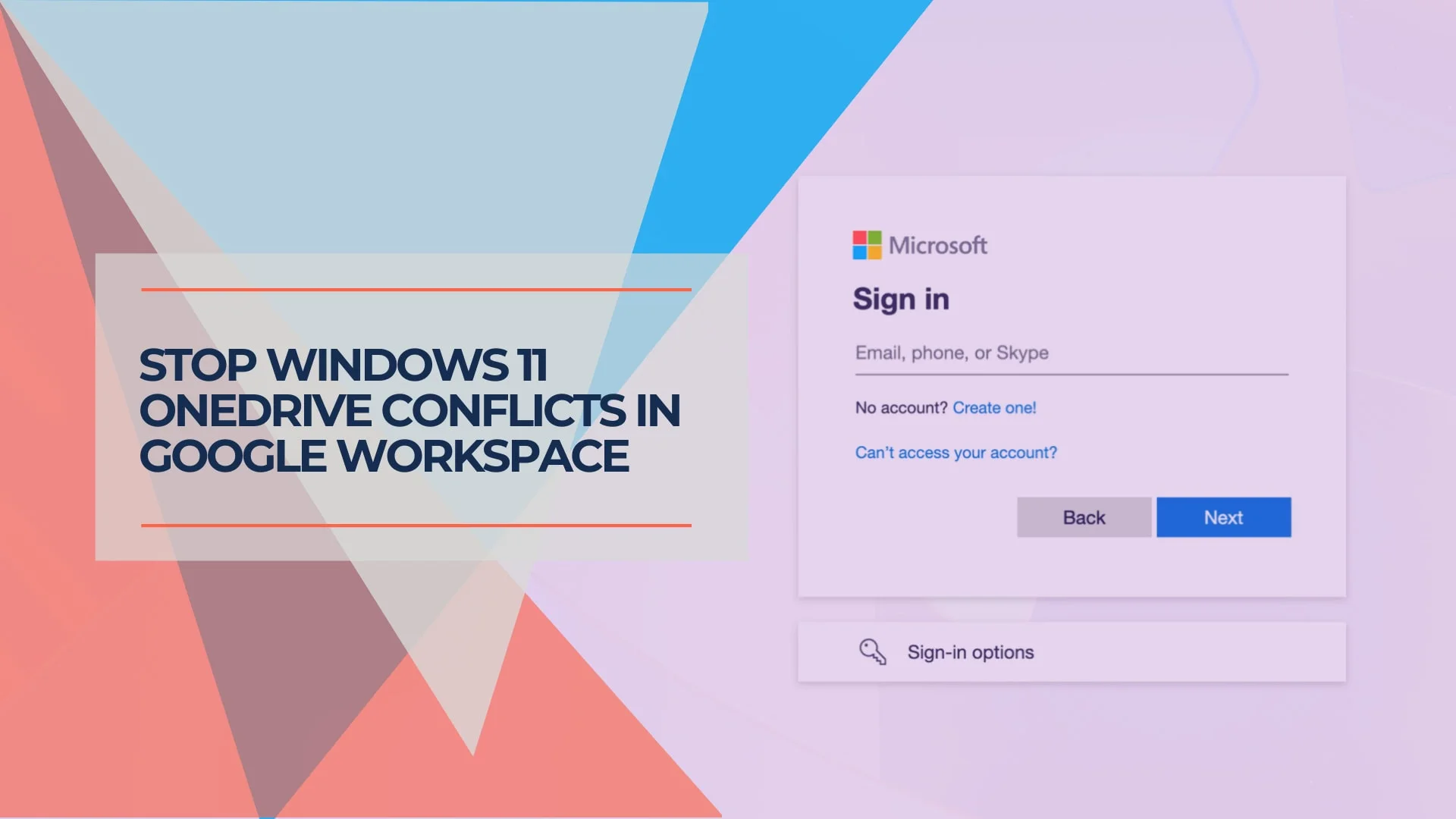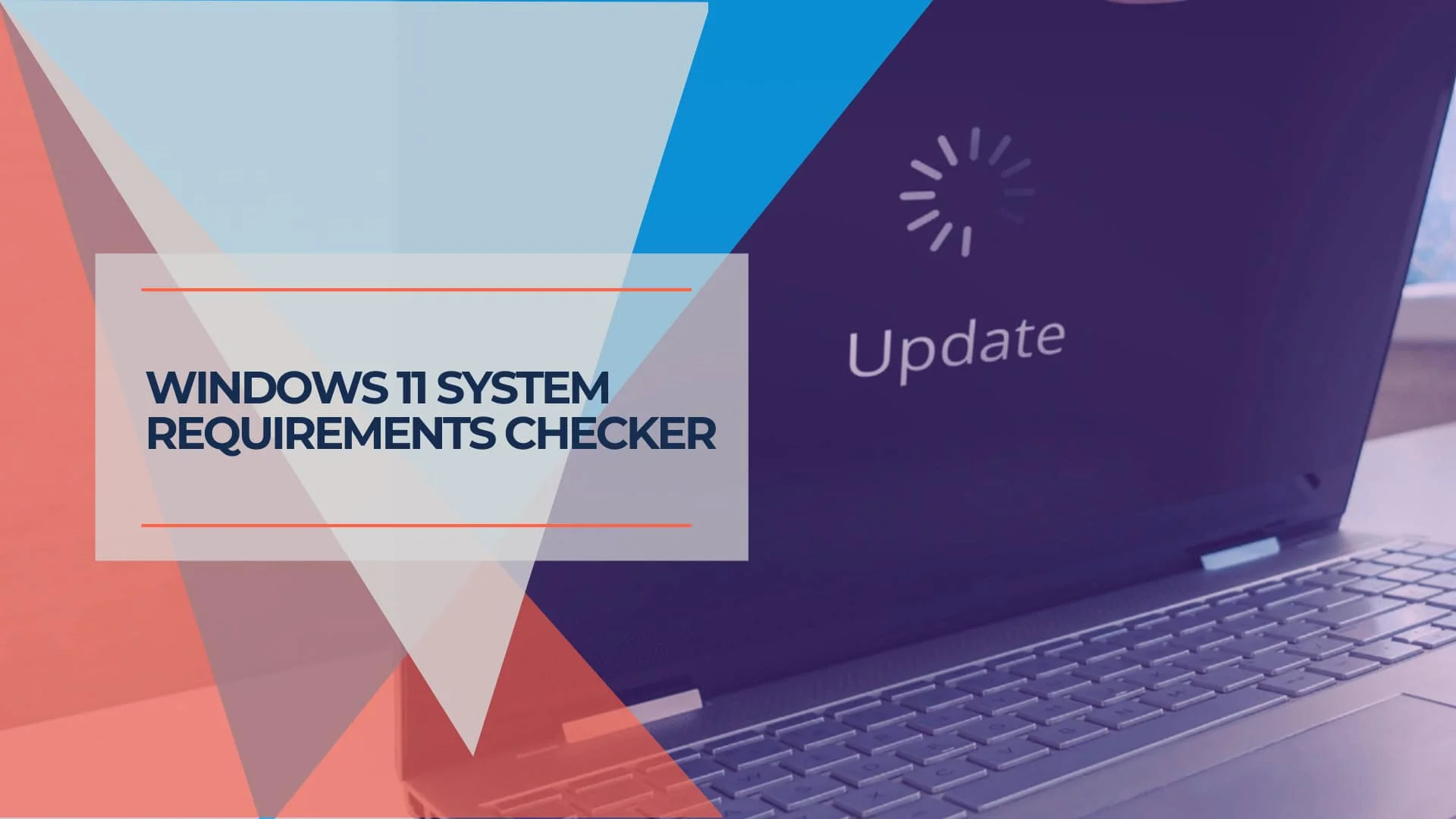Windows 10 End of Support Guide: Your Complete Migration Plan for 2025
Windows 10 support ends October 14, 2025. Get your complete business migration plan with timelines, costs, and step-by-step Windows 11 upgrade guide.


Key Takeaway
Windows 10 support officially ended on October 14, 2025. If your business is still running Windows 10, you have three clear paths forward: upgrade compatible hardware to Windows 11, replace older devices, or isolate legacy systems while purchasing Extended Security Updates. This guide provides a structured approach to assess your situation and execute the right migration strategy.
Microsoft's Windows 10 will end support on October 14, 2025, marking the conclusion of a decade-long era for the operating system that currently powers millions of business computers worldwide. This transition represents more than a simple software update—it requires careful planning, budget allocation, and strategic decision-making to ensure business operations continue seamlessly.
The approaching deadline presents both challenges and opportunities for small and medium-sized businesses. While the migration process requires investment in time and resources, it also provides a chance to modernize IT infrastructure, enhance security measures, and improve operational efficiency through updated technology.
Understanding the October 14, 2025, Deadline
The end of support date means Microsoft will cease providing security updates, bug fixes, and technical assistance for Windows 10. After this date, computers running Windows 10 will continue to function, but they will become more vulnerable to security threats as new vulnerabilities are discovered without corresponding patches.
What Ends on October 14, 2025
- Security Updates: No more monthly security patches to protect against new threats
- Bug Fixes: Technical issues will no longer receive official resolution
- Technical Support: Microsoft customer support will not assist with Windows 10 issues
- Compliance Certification: Many industry standards will no longer recognize Windows 10 as a supported platform
Extended Security Updates (ESU) Option
Microsoft offers Extended Security Updates for Windows 10, providing critical security updates beyond the October 14, 2025 deadline. This option includes specific cost considerations:
Business ESU Pricing
- Year 1 (October 2025 – October 2026): $61 per device
- Year 2: $122 per device (doubles from Year 1)
- Year 3: $244 per device (doubles from Year 2)
- Important: ESU is cumulative – joining in Year 2 requires paying for Year 1 as well
Consumer ESU Pricing
- $30 per year for Windows 10 Home users
- Available through Microsoft Store starting October 2025
Coverage Limitations
- Only critical security updates as defined by the Microsoft Security Response Center
- No new features, general bug fixes, or design improvements
- Limited technical support (ESU activation and update installation only)
ESU provides a temporary security bridge while organizations migrate to Windows 11, but it should not be considered a permanent solution.
Free ESU Options (Year 1)
Before paying for ESU, check if you qualify for free coverage:
| Scenario | Year 1 Cost | Requirement |
|---|---|---|
| Standard Consumer | $30 | One-time purchase through Microsoft Store |
| Standard Business | $61 | Commercial license through M365 Admin Center |
| Windows Backup User | Free | Sync settings via Windows Backup before deadline |
| EEA Resident | Free | Located in 30 European Economic Area countries |
| Windows 365 / Azure VD | Free | Access Windows 10 through cloud desktop |
| Education (EEA) | Free | Schools/universities in EEA countries |
| Education (Other) | $1 | Heavily discounted for non-EEA institutions |
Check Your Eligibility
For small businesses: If you're already using Windows 365 or Azure Virtual Desktop, ESU updates are included at no additional cost for all three years. This alone could save hundreds of dollars per device.
For consumers: Enable Windows Backup to sync your PC settings to the cloud—this qualifies you for the first year free while ensuring your data is protected before an eventual Windows 11 migration.
Your Three Migration Paths
Every business still running Windows 10 faces the same decision point. Here's how to choose the right path:
| Path | Best For | Upfront Cost | Ongoing Risk | Timeline |
|---|---|---|---|---|
| Upgrade to Windows 11 | Compatible hardware (2018+) | $0–199/device | Low | 2–4 weeks |
| Replace Hardware | Older devices (pre-2018) | $800–2,500/device | Low | 4–8 weeks |
| Isolate + ESU | Legacy software dependencies | $61/device/year (ESU) | Medium-High | Ongoing |
Path 1: Upgrade to Windows 11 (Recommended)
If your hardware is from 2018 or newer, you can likely upgrade in place—often for free if you already have a valid Windows 10 Pro license. Use Microsoft's PC Health Check tool to verify compatibility, or see our Windows 11 system requirements guide for detailed hardware checks.
Path 2: Replace Older Hardware
Devices older than 5–6 years typically lack TPM 2.0 or have unsupported processors. Rather than forcing incompatible upgrades, replacement provides better long-term value. See our best business laptops guide for Windows 11-ready recommendations.
Path 3: Isolate and Limit Use
For devices running legacy software that won't work on Windows 11, you can extend their life—but only with strict security controls:
Isolation Requirements
If you must keep Windows 10 running:
- Disconnect from main network (use separate VLAN or air-gap)
- Use only for specific offline tasks
- Block internet access except for ESU updates
- Implement strict USB/removable media policies
- Deploy endpoint protection with manual signature updates
- Plan eventual migration (ESU maximum: 3 years, through October 2028)
This approach carries ongoing risk. Unsupported systems become increasingly vulnerable to exploits that will never be patched.
Pre-Migration Checklist
Before starting any migration work, complete this assessment to avoid surprises:
Application Inventory
- ☐ Document all installed business software and versions
- ☐ Check vendor compatibility statements for Windows 11
- ☐ Identify legacy apps that may require Windows 10
- ☐ Test critical applications on a Windows 11 pilot system
- ☐ Document any custom scripts, macros, or integrations
Data Backup
- ☐ Create full system images of all Windows 10 devices
- ☐ Backup user profiles, documents, and desktop files
- ☐ Export browser bookmarks, saved passwords, and extensions
- ☐ Document network drive mappings and printer configurations
- ☐ Backup application-specific data (email archives, database files)
Hardware Compatibility Check
- ☐ Run PC Health Check on all devices
- ☐ Verify TPM 2.0 is present and enabled in BIOS/UEFI
- ☐ Confirm RAM meets 8GB recommendation for business use
- ☐ Check storage capacity (256GB+ recommended for Windows 11)
- ☐ Note devices requiring BIOS updates to enable Secure Boot
For comprehensive security preparation, review our cybersecurity software guide to ensure your protection tools are Windows 11-compatible.
Migration Options Assessment
Option 1: Upgrade to Windows 11
Best for: Businesses with compatible hardware seeking modern features and long-term support
Requirements:
- 8th-generation Intel processors or newer (or AMD Ryzen 2000 series and newer)
- 4GB RAM minimum (8GB recommended for business use)
- 64GB storage minimum (256GB recommended)
- UEFI firmware with Secure Boot capability
- TPM 2.0 chip
Cost Considerations:
- Windows 11 Pro licenses: $199 per device (official Microsoft pricing)
- Budget-friendly alternatives: Discounted licenses available through authorized retailers
- Potential hardware upgrades for compatibility
- Staff training and adaptation time
Option 2: Hardware Replacement
Best for: Businesses with older hardware that cannot meet Windows 11 requirements
Considerations:
- New business computers with Windows 11 Pro pre-installed
- Opportunity to modernize the entire IT infrastructure
- Higher upfront costs but long-term reliability
- Improved performance and productivity features
Option 3: Extended Security Updates
Best for: Businesses requiring additional time for migration planning or budget allocation
Limitations:
- Higher per-device costs over time
- No new features or improvements
- Still requires eventual migration
- Limited compliance value in regulated industries
Business Impact Assessment Framework
Current Infrastructure Evaluation
Infrastructure Assessment Checklist
Hardware Inventory
- ☐ Document all Windows 10 devices – Include computers, laptops, tablets, and embedded systems
- ☐ Check processor compatibility – Verify CPU generation and model against Windows 11 requirements
- ☐ Assess RAM and storage – Determine which devices meet minimum and recommended specifications
- ☐ Verify TPM 2.0 availability – Check BIOS/UEFI settings for Trusted Platform Module status
Software Dependencies
- ☐ Catalog business-critical applications – Identify software that may require compatibility testing
- ☐ Review legacy software needs – Determine if older applications will function on Windows 11
- ☐ Document custom integrations – Note any specialized software or hardware integrations
Security and Compliance
- ☐ Evaluate current security tools – Ensure antivirus and security software supports Windows 11
- ☐ Review compliance requirements – Understand how end of support affects industry compliance
- ☐ Assess data protection needs – Consider encryption and backup requirements
Cost-Benefit Analysis Framework
Immediate Costs:
- Windows 11 licensing fees
- Hardware upgrade or replacement expenses
- Professional installation and setup services
- Staff training and productivity adjustment time
Long-Term Benefits:
- Enhanced security features and regular updates
- Improved performance and user experience
- Continued compliance with industry standards
- Access to new productivity and collaboration tools
Risk Mitigation Value:
- Reduced cybersecurity vulnerabilities
- Maintained software vendor support
- Avoided compliance penalties
- Protected business reputation and client trust
Meet Windows 11
Step-by-Step Migration Planning
Phase 1: Assessment and Planning (1-2 weeks)
Week 1: Infrastructure Assessment
- Complete hardware inventory using the checklist above
- Run Windows 11 compatibility checker on all devices
- Document current software applications and their Windows 11 compatibility
- Identify devices requiring hardware upgrades or replacement
Week 2: Strategic Planning
- Develop a migration timeline based on business priorities
- Calculate total migration costs, including licensing, hardware, and services
- Identify critical business periods to avoid during migration
- Plan staff training and communication strategy
Phase 2: Preparation and Testing (2-3 weeks)
Pilot Program Setup:
- Select 2-3 non-critical devices for initial Windows 11 testing
- Install Windows 11 on pilot devices and test all business applications
- Document any compatibility issues or workflow changes
- Gather user feedback on interface changes and new features
Infrastructure Preparation:
- Order Windows 11 licenses for qualifying devices
- Purchase replacement hardware for incompatible systems
- Schedule professional installation services if needed
- Prepare data backup and migration procedures
Phase 3: Phased Rollout (3-4 weeks)
Priority-Based Implementation:
- Week 1: Executive and administrative systems
- Week 2: Core business operation computers
- Week 3: Remaining workstations and laptops
- Week 4: Testing, optimization, and final adjustments
Rollout Best Practices:
- Migrate during off-peak hours or weekends
- Maintain backup systems until migration completion
- Provide immediate technical support during transition
- Document all changes and new procedures
Windows 11 Edition Selection for Business
The choice between Windows 11 editions significantly impacts both functionality and cost. For detailed comparison guidance, refer to our comprehensive Windows 11 Home vs Pro comparison guide which analyzes features, pricing, and business use cases.
Windows 11 Pro – Recommended for Most Businesses
Best for: Small to medium businesses requiring enhanced security and management features
Key advantages: BitLocker encryption, Remote Desktop, Group Policy management, Hyper-V virtualization
Licensing: Windows 11 Pro licenses available starting at $199 per device
Windows 11 Home to Pro Upgrade
Best for: Businesses with existing Windows 11 Home devices requiring Pro features
Cost advantage: Upgrade packages available at $99 compared to full Pro licenses
Budget option: Discounted Pro licenses from authorized retailers for new installations
Windows 11 Enterprise may provide additional value through volume licensing programs and enhanced administrative tools for businesses requiring advanced management capabilities across multiple locations.
Hardware Compatibility and Upgrade Strategies
Compatibility Assessment Results
Immediately Compatible Devices:
- Computers with 8th-generation Intel processors or newer
- Systems with AMD Ryzen 2000 series processors or newer
- Devices already meet TPM 2.0 and Secure Boot requirements
- Modern business laptops purchased within the last 4 years
Devices Requiring Minor Upgrades:
- Systems needing RAM expansion to meet the 8GB recommended minimum
- Computers require storage upgrades for optimal performance
- Devices needing BIOS/UEFI updates to enable TPM 2.0
Devices Requiring Replacement:
- Computers with 7th-generation Intel processors or older
- Systems with first-generation AMD Ryzen processors
- Devices without TPM 2.0 capability or UEFI firmware
- Hardware approaching 5+ years of age
Hardware Upgrade Recommendations
For businesses needing new equipment, consider these proven business solutions:
Business Laptops: Our best business laptops guide provides comprehensive recommendations for Windows 11-compatible mobile computing. Key considerations include processor performance, RAM capacity, and security features essential for business use.
Desktop Workstations: Modern desktop computers offer excellent Windows 11 compatibility and expansion capabilities for office environments. Our CAD workstation guide covers high-performance requirements, while standard business desktops focus on productivity and reliability.
Security Hardware: Windows 11's enhanced security features work best with compatible hardware. Review our enterprise security solutions guide for recommendations on implementing comprehensive protection strategies that complement Windows 11 Pro's built-in security features.
Data Migration and Security Considerations
Pre-Migration Data Protection
Complete System Backup:
- Create full system images of all critical computers
- Backup individual user data and application settings
- Document current security configurations and policies
- Test backup restoration procedures before beginning migration
Network Infrastructure Integration:
- Review network capacity for Windows 11 feature updates and cloud integration
- Consider network security enhancements during migration planning
- Evaluate firewall and access control configurations for Windows 11 compatibility
- Plan for increased bandwidth requirements from enhanced security features
For businesses planning network infrastructure upgrades alongside Windows migration, our UniFi business network guide provides comprehensive recommendations for scalable, secure networking solutions that complement Windows 11's enhanced security features.
Security Enhancement Opportunities
Windows 11 provides significant security improvements over Windows 10, particularly for business environments:
Enhanced Authentication:
- Windows Hello for Business biometric authentication
- Improved multi-factor authentication integration
- Enhanced smart card and certificate management
Advanced Threat Protection:
- Microsoft Defender for Business integration
- Virtualization-based security features
- Improved network isolation and protection
Data Protection:
- Enhanced BitLocker encryption capabilities
- Improved Windows Information Protection (WIP)
- Advanced audit logging and compliance reporting
Budget Planning and Cost Management
Migration Cost Categories
Software Licensing Costs
- Windows 11 Pro: $199 per device (standard retail pricing)
- Home to Pro Upgrade: $99 per device for existing Windows 11 Home systems
- Budget Alternative: Discounted licenses available through authorized retailers
- Volume Licensing: Potential discounts for 5+ licenses through Microsoft partners
Hardware Investment
- Compatible Device Upgrades: $200-$500 per device for RAM/storage improvements
- Complete System Replacement: $800-2,500 per device depending on business requirements
- Specialized Equipment: Additional costs for industry-specific hardware needs
Professional Services
- Migration Planning: $500-2,000 for comprehensive assessment and planning
- Installation and Setup: $150-300 per device for professional deployment
- Training and Support: $100-200 per employee for transition training
Return on Investment Calculations
Productivity Improvements:
- Enhanced security reduces downtime from malware incidents
- Improved performance increases employee efficiency
- Better collaboration tools streamline business processes
Cost Avoidance:
- Prevented security breaches and associated costs
- Avoided compliance penalties in regulated industries
- Reduced IT support calls through improved stability
Long-Term Value:
- Extended hardware lifecycle through optimized performance
- Access to the latest business applications and integrations
- Future-proofed technology foundation for business growth
Industry-Specific Considerations
Healthcare and HIPAA Compliance
Medical practices and healthcare organizations face unique challenges with the Windows 10 end-of-support deadline. Using unsupported operating systems can violate HIPAA technical safeguards requirements, potentially resulting in significant penalties.
Critical Actions for Healthcare:
- Prioritize patient data security through immediate Windows 11 migration
- Ensure electronic health record (EHR) system compatibility with Windows 11
- Implement enhanced encryption and access controls available in Windows 11 Pro
- Document compliance efforts for audit purposes
- Review our cybersecurity guide for small businesses for additional protection strategies
Financial Services and Data Protection
Banks, accounting firms, and financial service providers must maintain rigorous data protection standards that require supported, regularly updated operating systems.
Financial Sector Priorities:
- Evaluate BitLocker encryption requirements for client data protection in Windows 11 Pro
- Assess Windows Information Protection (WIP) for document security
- Plan advanced audit logging for compliance reporting
- Coordinate migration with critical financial reporting periods
- Consider our accounting software recommendations for Windows 11 compatibility
Legal and Professional Services
Law firms and professional service providers handle confidential client information requiring robust security measures and documented protection protocols.
Professional Services Focus:
- Implement client confidentiality protection through enhanced security features
- Plan document management system integration with Windows 11
- Consider remote work capabilities for hybrid office environments
- Ensure conflict of interest management software compatibility
Timeline and Project Management
Critical Milestones
August 15-31, 2025
- Complete infrastructure assessment
- Finalize migration strategy and budget approval
- Begin ordering licenses and replacement hardware
September 1-15, 2025
- Implement pilot program with test devices
- Complete staff training planning
- Finalize professional service arrangements
September 16-30, 2025
- Begin phased migration rollout
- Complete critical business system transitions
- Conduct testing and optimization
October 1-14, 2025
- Finalize remaining device migrations
- Complete staff training and documentation
- Verify all systems are operational before the support deadline
Risk Management
Potential Delays:
- Hardware supply chain issues require alternative sourcing
- Software compatibility problems requiring vendor consultation
- Staff availability conflicts during critical business periods
Mitigation Strategies:
- Order hardware and licenses immediately to avoid supply delays
- Identify alternative solutions for compatibility issues
- Plan migration during lower-impact business periods
- Maintain Extended Security Updates as a backup option
Professional Support and Resources
When to Engage Professional Services
Professional Migration Assistance Recommended for:
- Organizations with 10+ devices requiring coordinated migration
- Businesses using custom software require compatibility validation
- Companies lacking dedicated IT staff or expertise
- Organizations in regulated industries (healthcare, finance, legal) with compliance requirements
- Businesses with complex network configurations or domain environments
Self-Managed Migration Considerations:
- Small businesses with 5 or fewer standard devices
- Organizations with experienced IT staff available
- Companies using mainstream business applications with confirmed Windows 11 compatibility
- Businesses with flexible migration timelines, allowing for testing and gradual rollout
Available Support Resources
iFeelTech provides comprehensive migration planning and implementation services for South Florida businesses. Our team specializes in small—to medium-sized business technology transitions, ensuring minimal disruption to daily operations while maintaining security and compliance standards.
Our Migration Services Include:
- Complete infrastructure assessment and compatibility analysis
- Strategic migration planning with realistic timelines
- Professional installation and configuration services
- Post-migration support and system optimization
- Staff training and documentation
Alternative Solutions and Extended Support
Extended Security Updates (ESU) Analysis
Microsoft's Extended Security Updates provide a temporary solution for businesses unable to complete migration by October 14, 2025. However, careful consideration of costs and limitations is essential.
ESU Year 1 Pricing (October 2025 – October 2026):
- $61 per device for small and medium businesses
- Additional fees may apply based on current licensing arrangements
- Covers only critical security updates, not feature improvements
ESU Limitations:
- No new features or general bug fixes
- Limited technical support availability
- Increasing costs for subsequent years if extended further
- Potential compliance limitations in regulated industries
Hybrid Migration Strategies
Some businesses may benefit from a phased approach combining immediate critical system migration with ESU coverage for less critical devices.
Hybrid Approach Benefits
- Immediate protection for essential business systems
- Extended timeline for budget allocation and planning
- Reduced initial investment requirements
- Gradual staff adaptation to Windows 11
Implementation Strategy:
- Migrate critical business systems immediately to Windows 11
- Purchase ESU coverage for remaining Windows 10 devices
- Complete full migration during the ESU period
- Avoid ongoing ESU costs beyond the first year
Post-Migration Optimization
Windows 11 Business Feature Utilization
After completing migration, businesses can leverage Windows 11's enhanced capabilities to improve operations and security:
Security Enhancements:
- Configure BitLocker encryption for data protection
- Implement Windows Hello for Business authentication
- Enable advanced threat protection features
- Set up comprehensive audit logging
Productivity Features:
- Utilize improved virtual desktop capabilities
- Implement Microsoft Teams integration
- Configure enhanced remote work tools
- Optimize performance settings for business applications
Management Capabilities:
- Deploy Group Policy configurations
- Implement Windows Update for Business
- Configure device management and monitoring
- Establish user access controls and permissions
Ongoing Maintenance and Support
Regular Update Management:
- Establish Windows Update policies for business environments
- Schedule regular security update installations
- Monitor and test updates before full deployment
- Maintain system documentation and configuration records
Performance Monitoring:
- Track system performance metrics after migration
- Monitor application compatibility and user feedback
- Address any performance issues or optimization opportunities
- Plan for future hardware refresh cycles
Frequently Asked Questions
What happens if we do not migrate by October 14, 2025?
Your Windows 10 computers will continue functioning, but they will no longer receive security updates, making them more vulnerable to new threats. Many compliance standards will also no longer recognize Windows 10 as a supported platform, which could affect business certifications and insurance coverage.
Can we purchase Extended Security Updates for additional time?
Yes, Microsoft offers Extended Security Updates for $61 per device for the first year (October 2025 – October 2026). This provides critical security updates but no new features or general support. Consumer ESU is available for $30 per year for Windows 10 Home users.
How do we check if our computers can run Windows 11?
Microsoft provides a PC Health Check tool that evaluates your hardware compatibility. Key requirements include 8th generation Intel processors or newer, 4GB RAM minimum, and TPM 2.0 capability. Our business laptop guide covers Windows 11-compatible systems.
Should we choose Windows 11 Home or Pro for business use?
Windows 11 Pro is recommended for most businesses due to essential features like BitLocker encryption, Remote Desktop, and Group Policy management. Windows 11 Pro licenses start at $199, or you can upgrade from Home for $99.
What is the typical migration timeline for small businesses?
Most small businesses can complete migration in 4-6 weeks with proper planning. This includes 1-2 weeks for assessment, 2-3 weeks for preparation and testing, and 2-3 weeks for phased rollout. Organizations with fewer than 10 devices may complete migration faster.
Do we need professional help for the migration?
Professional assistance is recommended for businesses with 10+ devices, complex software integrations, or strict compliance requirements. Smaller organizations with standard applications may manage migration internally with proper planning and testing.
How much should we budget for Windows 11 migration?
Budget considerations include Windows 11 Pro licenses ($199 per device), potential hardware upgrades ($200-500 per device), and professional services if needed ($150-300 per device for installation). Budget-friendly alternatives are available through authorized retailers.
Will our existing business software work with Windows 11?
Most modern business applications are compatible with Windows 11. However, testing is essential for custom software or older applications. Create a pilot program to verify compatibility before full migration. Our business software guide covers Windows 11 compatibility for popular applications.
Conclusion and Next Steps
The October 14, 2025, Windows 10 end-of-support deadline requires immediate action from businesses still running the older operating system. While the transition requires planning and investment, it also provides opportunities to modernize technology infrastructure and enhance security measures.
Immediate Action Items
- Complete infrastructure assessment using our provided checklist
- Determine migration strategy based on hardware compatibility
- Calculate budget requirements and secure necessary approvals
- Begin ordering Windows 11 Pro licenses and compatible hardware
- Schedule professional services if needed for complex migrations
Strategic Considerations:
- Windows 11 Pro provides essential business features worth the investment
- Hardware replacement may offer better long-term value than extensive upgrades
- Professional migration services reduce risk and ensure business continuity
- Post-migration optimization maximizes the value of your technology investment
Related Resources
- Windows 11-compatible business laptops
- Enterprise security solutions
- Small business cybersecurity guide
- Business software compatibility guide
The transition to Windows 11 represents more than compliance with Microsoft's support timeline—it positions your business for improved security, enhanced productivity, and continued technology advancement. With less than two months remaining before the deadline, prompt action ensures a smooth transition, maintaining business operations while protecting valuable data and systems.
For personalized migration planning assistance, contact iFeelTech's team of business technology specialists. We provide comprehensive assessment, planning, and implementation services designed specifically for small and medium-sized businesses in South Florida and beyond.
Contact Our Team for Personalized AssistanceAffiliate Disclosure: This article contains affiliate links. If you make a purchase through these links, we may earn a small commission at no extra cost to you.
Related Articles
More from IT Guides

Managing Windows 11 with Google Workspace: Preventing Unwanted Microsoft Service Integration
Windows 11 automatically enables OneDrive and Edge, conflicting with Google Workspace. Learn practical solutions to control your business environment.
17 min read

Windows 11 System Requirements: Hardware Compatibility Checker 2025
Verify Windows 11 compatibility with our comprehensive hardware checker. Covers TPM 2.0, processors, troubleshooting, and business migration planning.
14 min read

IT Budget Planning for Small Business: Where to Invest in 2026
Plan your 2026 IT budget with this strategic guide for small businesses. Learn budget benchmarks, allocation frameworks, and where to invest across cybersecurity, cloud, hardware, and network infrastructure.
14 min read